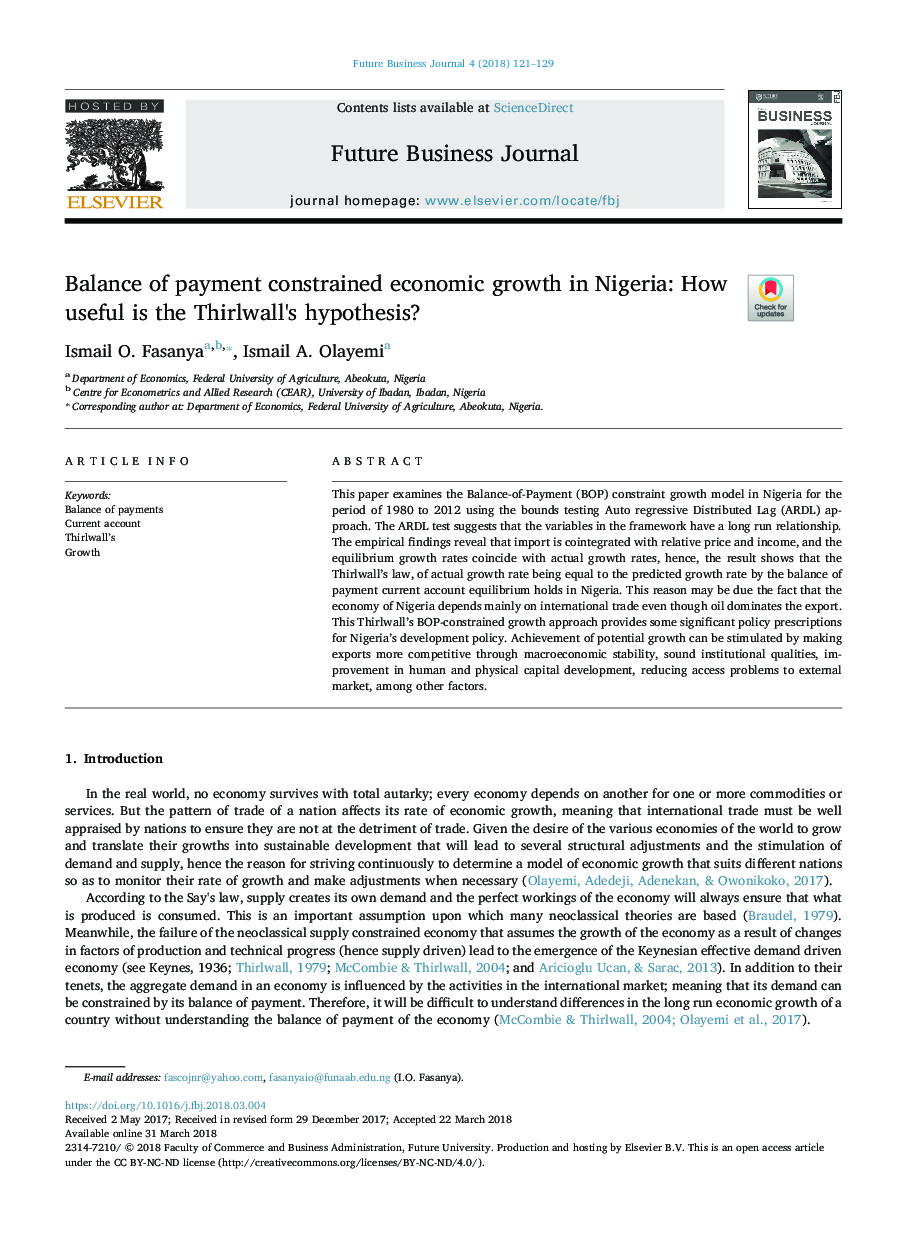| Article ID | Journal | Published Year | Pages | File Type |
|---|---|---|---|---|
| 7428879 | Future Business Journal | 2018 | 9 Pages |
Abstract
This paper examines the Balance-of-Payment (BOP) constraint growth model in Nigeria for the period of 1980 to 2012 using the bounds testing Auto regressive Distributed Lag (ARDL) approach. The ARDL test suggests that the variables in the framework have a long run relationship. The empirical findings reveal that import is cointegrated with relative price and income, and the equilibrium growth rates coincide with actual growth rates, hence, the result shows that the Thirlwall's law, of actual growth rate being equal to the predicted growth rate by the balance of payment current account equilibrium holds in Nigeria. This reason may be due the fact that the economy of Nigeria depends mainly on international trade even though oil dominates the export. This Thirlwall's BOP-constrained growth approach provides some significant policy prescriptions for Nigeria's development policy. Achievement of potential growth can be stimulated by making exports more competitive through macroeconomic stability, sound institutional qualities, improvement in human and physical capital development, reducing access problems to external market, among other factors.
Related Topics
Social Sciences and Humanities
Business, Management and Accounting
Management Information Systems
Authors
Ismail O. Fasanya, Ismail A. Olayemi,
